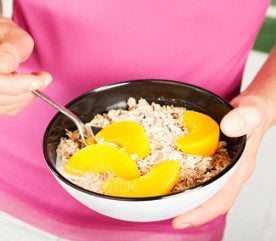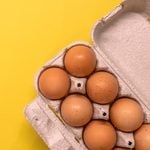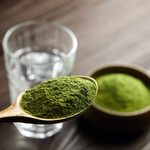Choosing Foods Low on the Glycemic Index
What's the difference between mashed potatoes and spaghetti? The potatoes tend to send blood sugar up high in a hurry, while the pasta causes less of a stir–even if you were to eat the same amount of total carbohydrate in both cases.

Scientists have discovered that some types of carbs, once in the body, convert faster to glucose than others do. See below for details on why this occurs and how it’s measured.
What is the Glycemic Index?
Back in 1981 a nutrition scientist tested a host of foods (all containing 50 grams of carbohydrate) on people, measured the blood sugar reactions and used them to rate the foods on a scale he called the glycemic index (GI). He discovered that certain starchy foods, such as potatoes and cornflakes, raised blood sugar nearly as much as pure glucose did! These earned high GI scores.
One thing the GI doesn’t take into account, though, is how much carbohydrate a serving of a food contains. You’d have to eat a heck of a lot of carrots to get 50 grams of carbs from them. The same goes for most vegetables and fruits. A better measure, then, is the glycemic load (GL), which corrects for this problem.
High-GL foods cause blood glucose levels to rise sharply, prompting the pancreas to secrete insulin to bring it back down. Low-GL foods create a smaller, more sustained rise in blood glucose and don’t require as much insulin.
Why are Low-GL Foods More Desirable Than High-GL Foods?
Studies have found that people who eat diets with a high GL have a higher rate of obesity, diabetes, heart disease and cancer. One study found that men who typically ate foods with a high GL had a 40 percent higher chance of developing diabetes. In the Nurses’ Healthy Study, women who ate diets with a high GL had a 37 percent higher chance of getting type 2 diabetes over the six-year span of the study. Yet another study found that swapping just one baked potato per week for a serving of brown rice could reduce a person’s odds of developing type 2 diabetes by up to 30 percent.
Of course, eating low-GL can also help if you already have diabetes. In one recent study published in the American Journal of Clinical Nutrition, researchers asked volunteers to eat 14 different typical meals (such as bagels and cream cheese with orange juice, for example), then measured the change in their blood glucose levels. They found that the GI of the foods in each meal was about 90 percent accurate in predicting how much the volunteers’ glucose levels changed.
Can I Lose Weight Eating Lower-GL Foods?
Maybe. Because they don’t trigger blood sugar highs–which are usually followed by lows that cause hunger–low-GL foods keep people full longer. Population studies have shown that people who get most of their carbs from the low end of the GI index tend to weigh less than others who gravitate toward sugary or starchy foods. And one study that compared a low-fat diet with a low-GL diet found that over the course of six to 10 weeks, the people on the low-GL diet reported less hunger, showed better use of insulin and had less inflammation in their bodies, which translates to a lower risk of artery damage and heart disease.
How Do I Choose Low-GL Foods?
First and foremost, choosing low-GL foods means reaching for more fresh, non-starchy fruits and vegetables, nearly all of which fall very low on the GL scale. (Go easier on starchier vegetables including potatoes, parsnips, corn and peas.) Low-fat dairy foods also tend to be low-GI, along with most protein foods (that makes sense, since it’s carbohydrates, not proteins, that raise blood sugar). Choose breakfast cereals with at least 5 grams of fiber per serving, and they will likely be fairly low GL. And opt for whole grains (such as brown rice, barley, bulgur, oatmeal and coarse whole-wheat bread) over refined grains like white rice and white bread and foods made with white flour, such as most store-bought baked goods. In general, the more finely ground the grain and the less fiber it contains, the faster it will be digested–and the faster blood sugar will rise. That’s one reason oatmeal, which isn’t ground, has a lower GL than most cold cereals.
Which High-GL Foods Should I Avoid?
Nutritionists say “never say never” In other words, no foods are banned completely from a healthy diet. See the chart below for a few foods to cut back on or eat in smaller portion sizes and some comparable choices that don’t raise blood sugar as much.
| INSTEAD OF | TRY |
|---|---|
| White potatoes or French fries | Sweet potatoes or fries made from sweet potatoes |
| White rice | Brown or converted rice, quinoa, bulgur, pearled barley or pasta cooked al dente |
| White bread | Coarse whole-grain bread, genuine sourdough bread or dense rye bread |
| Cornflakes, rice cereal or instant cream of wheat | Bran cereal, oatmeal or regular cream of wheat |
| Corn | Beans and lentils |
| Chips, pretzels, rice cakes or jelly beans | Nuts |
| Sugary beverages or juices | Low-fat or nonfat milk or tomato juice |



